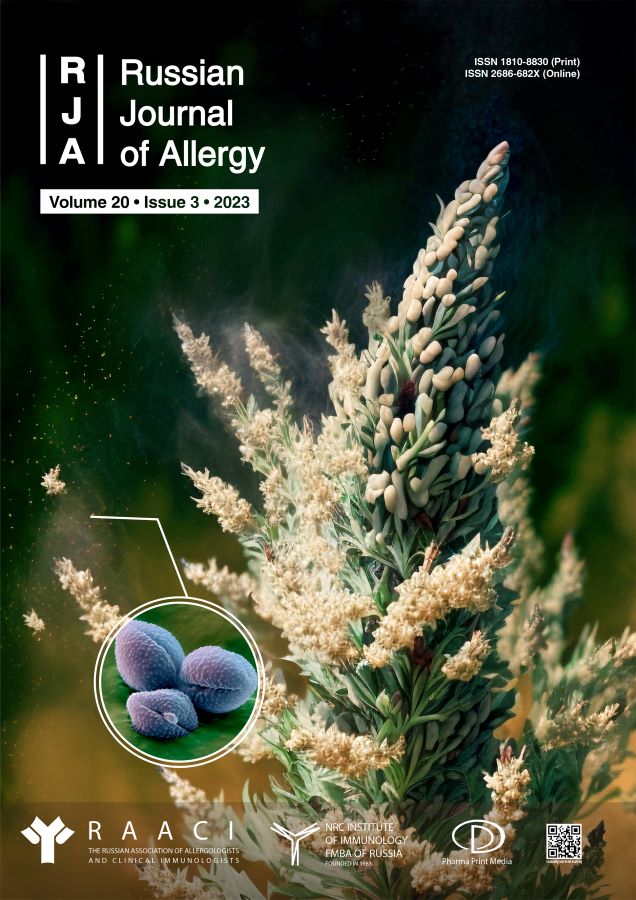To be or not to be for a diet? Decision-making algorithm for dietary management of children with atopic dermatitis
- 作者: Makarova S.G.1,2, Murashkin N.N.1,3,4, Emelyashenkov E.E.1
-
隶属关系:
- National Medical Research Center for Children’s Health
- Lomonosov Moscow State University
- The First Sechenov Moscow State Medical University (Sechenov University)
- Central State Medical Academy of Department of Presidential Affairs
- 期: 卷 20, 编号 3 (2023)
- 页面: 373-379
- 栏目: Letters to the editor
- URL: https://journals.rcsi.science/raj/article/view/251330
- DOI: https://doi.org/10.36691/RJA15042
- ID: 251330
如何引用文章
全文:
详细
The widespread, and not always justified, long-term prescription of a hypoallergenic diet for atopic dermatitis without allergy testing and verification of the diagnosis of food allergy has led to the “pendulum swinging” in the opposite direction: in recent years, the effectiveness and necessity of an elimination diet in therapy atopic dermatitis is frequently questioned. At the same time, it is generally accepted that in proven food allergy, the targeted elimination diet remains a necessary method in complex therapy.
A study was conducted, including a retrospective analysis of 430 case histories and an examination of 130 children with severe atopic dermatitis as part of the prospective part of the study. The analysis of the nutritional status, chemical composition of the diet, body composition, quality of life, eating behavior, as well as compliance of the patients’ parents was carried out which made it possible to analyze the complex interaction of these indicators with various factors as well as with each other. Risk factors for impaired nutritional status and eating behavior in children with severe atopic dermatitis were early onset of the disease, and long-term adherence to recommendations for limiting or excluding various foods from the diet, especially dairy and/or 4 or more food groups. It was revealed that it is an unbalanced diet, and not elimination itself, is the main factor that reduces the nutritional status of a child. Additional risk factors for impaired nutritional status are the traits of children’s eating behavior caused by the disease itself and adherence to dietary measures, making it difficult to form a complete diet if a diet is necessary and to expand it. As a result, an algorithm was formed, aimed at optimizing the nutritional support of children suffering from atopic dermatitis and food allergy.
作者简介
Svetlana Makarova
National Medical Research Center for Children’s Health; Lomonosov Moscow State University
Email: sm27@yandex.ru
ORCID iD: 0000-0002-3056-403X
SPIN 代码: 2094-2840
MD, Dr. Sci. (Med.)
俄罗斯联邦, Moscow; MoscowNikolay Murashkin
National Medical Research Center for Children’s Health; The First Sechenov Moscow State Medical University (Sechenov University); Central State Medical Academy of Department of Presidential Affairs
Email: m_nn2001@mail.ru
ORCID iD: 0000-0003-2252-8570
SPIN 代码: 5906-9724
MD, Dr. Sci. (Med.), Professor
俄罗斯联邦, Moscow; Moscow; MoscowEvgeniy Emelyashenkov
National Medical Research Center for Children’s Health
编辑信件的主要联系方式.
Email: dkswdsman@mail.ru
ORCID iD: 0000-0002-0995-4260
SPIN 代码: 7018-6434
俄罗斯联邦, Moscow
参考
- Anupam D, Saumya P. Role of elimination diet in atopic dermatitis: Current evidence and understanding. Indian J Paediat Dermatol. 2021;22(1):21–28. doi: 10.4103/ijpd.IJPD_88_20
- Schutte O, Bachmann L, Shivappa N, et al. Pro-inflammatory diet pictured in children with atopic dermatitis or food allergy: Nutritional data of the LiNA cohort. Front Nutr. 2022;9:868872. doi: 10.3389/fnut.2022.868872
- Clinical recommendations “Food Allergy”. The Union of Pediatricians of Russia; 2018. 50 р. (In Russ).
- Muraro A, Werfel T, Hoffmann-Sommergruber K, et al.; EAACI Food Allergy and Anaphylaxis Guidelines Group. EAACI food allergy and anaphylaxis guidelines: Diagnosis and management of food allergy. Allergy. 2014;69(8):1008–1025. doi: 10.1111/all.12429
- Meyer R, Wright K, Vieira MC, et al. International survey on growth indices and impacting factors in children with food allergies. J Hum Nutr Diet. 2019;32(2):175–184. doi: 10.1111/jhn.12610
- Beck C, Koplin J, Dharmage S, et al.; Health Nuts Investigators. Persistent food allergy and food allergy coexistent with eczema is associated with reduced growth in the first 4 years of life. J Allergy Clin Immunol Pract. 2016;4(2):248–256.e3. doi: 10.1016/j.jaip.2015.08.009
- Chong KW, Wright K, Goh A, et al. Growth of children with food allergies in Singapore. Asia Pac Allergy. 2018;8(4):e34. doi: 10.5415/apallergy.2018.8.e34
- Meyer R. Nutritional disorders resulting from food allergy in children. Pediatr Allergy Immunol. 2018;29(7):689–704. doi: 10.1111/pai.12960
- Emelyashenkov E, Makarova S. Actual nutrition and physical development of children with atopic dermatitis and food allergies. Russ Pediatr J. 2022;25(6):403–404. (In Russ).
- Cui HS, Ahn IS, Byun YS, et al. Dietary pattern and nutrient intake of Korean children with atopic dermatitis. Ann Dermatol. 2014;26(5):570–575. doi: 10.5021/ad.2014.26.5.570
- Emelyashenkov E, Makarova S, Murashkin N, et al. Effect of elimination diet on quality of life and eating behavior in children with severe atopic dermatitis and food allergies. Medical Alphabet. 2023;(8):69–74. (In Russ). doi: 10.33667/2078-5631-2023-8-69-74
补充文件







